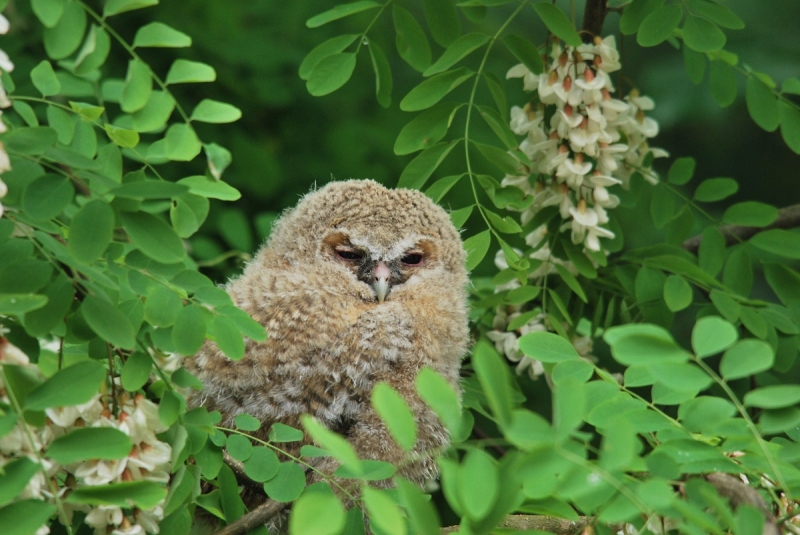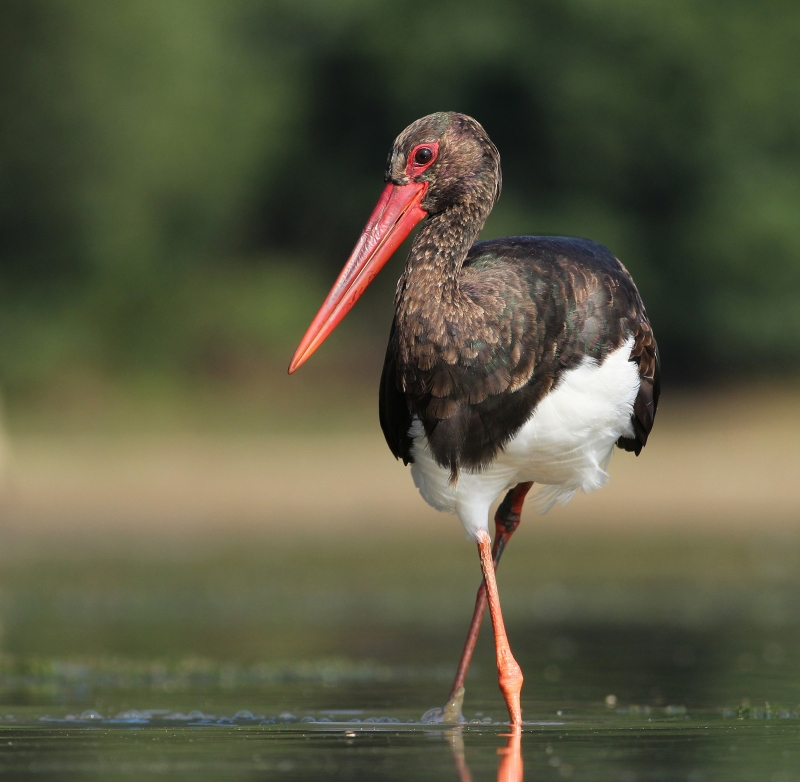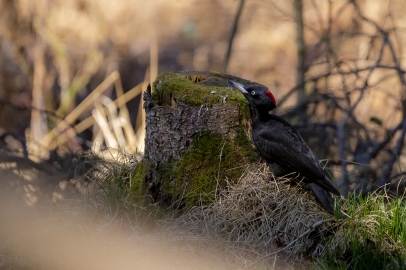Forest birds
The group of forest birds includes birds that predominantly live and nest in forests. Populations of the chaffinch (Fringilla coelebs), great tit (Parus major), blue tit (Cyanistes caeruleus), greenfinch (Chloris chloris), nuthatch (Sitta europaea) and jay (Garrulus glandarius) are numerous. Robin (Erithacus rubecula), blackbird (Turdus merula) and song thrush (Turdus philomelos) often hide in the scrubs of the forest edge. In mid-April, the blackcap (Sylvia atricapilla), the most numerous bird in Slovenia, returns to our forests. The typical call "kewick" of the tawny owl (Strix aluco) echoes throught the forests during the night.

Tawny owl chicks are often seen near or even on the floor - the parents are near so no worries ![]() G. Domanjko
G. Domanjko
In forests of Goričko nests one of the most enigmatic birds - the black stork (Ciconia nigra). Despite its relatively large size (up to 95 cm in height), due to its mysterious way of living, knowledge on its ecology and distribution is still poor. Adult storks have mainly shiny black-dark green plumage with white underparts and a distinctive bright red beak and legs. It is a migratory bird that returns to Goričko from sub-Saharan Africa in April. It forages for food in small forest streams, oxbow lakes, river channels, ditches and wetlands. It predominately preys for fish, crustaceans, amphibians, aquatic snails and aquatic insects. The nest is usually constructed in forest trees with large canopies and far from human disturbance. Usually big deciduous tree, like oak,is chosen, rarely Scots pine can be also chosen for nesting. Nest is large enough for 3-4 young which fled at 60-70 days of age. Black stork is very sensitive to noise and interference and is a very rare nesting bird in Slovenia.

Adult black stork with distinctive red legs and beak ![]() J. Novak
J. Novak
Rare is honey buzzard (Pernis apivorus). This bird of prey, which reaches up to 60 cm in size, feeds almost exclusively on wasp and hornet larvae, rarely also on small mammals and reptiles. The larvae is dig out with long toes and claws. Honey buzzard nests high in the canopy of a larger deciduous tree and is rarely seen. In spring, when the males fiercely defend their territory, it can be recognizable by slim and longer neck, by typical wide gap between dark bands on the underside of the tail feathers and by yellow eyes. It lives up to 30 years and is a migratory bird that spends the winter in South Africa.
The largest European woodpecker, black woodpecker (Dryocopus martius), reaches up to 55 cm in length and weighs up to 400 g, with a wingspan of up to 73 cm. The plumage is completely black, only head is partily red.Males have all-red crown, while females has only red patch on hindcrown. Strong white beak is used for hammer on dead trees to dig out ants and wood-boring beetle grub and is therefore one of the key species in maintaining the natural balance of forest pests. Lives up to 10 years. Black stork, honey buzzard and black woodpecker are all qualifying species in the Natura 2000 site Goričko, as in Goričko their populations make up 9 %, 4% and 3% of the total Slovenian population, respectively.

Black woodpecker
Author: dr. Tomi Trilar
Slovenian Wildlife Sound Archive, Slovenian Museum of Natural History
The great spotted woodpecker (Dendrocopos major) is widespread and common, while the middle spotted woodpecker (Dendrocopos medius) and the lesser spotted woodpecker (Dendrocopos minor) occur rarely. In alluvial forests with white willow or black alder in spring typical thin whistle of collared flycatcher (Ficedula albicollis) can be heard. Rarely seen is also golden oriole (Oriolus oriolus), which is easily heard in every major forest complex, but despite its bright yellow plumage, it is very rarely seen. Jackdaw (Corvus monedula) nest in the tree cavities, meanwhile the raven (Corvus corax) builds its large nest on tree.








